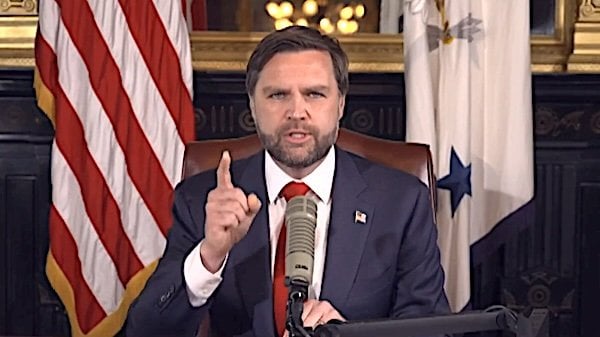
Every morning, millions of American children walk into schools that struggle with limited resources, while just a few miles away, their grandparents receive government checks that haven’t missed a beat in decades.
It’s not because the children are any less in need. However, the difference in how the government supports America’s aging population versus its youngest members is the result of politics and a lopsided system—one that guarantees checks for retirees, but leaves funding for children up for regular debate.
An Urban Institute analysis found that, in 2023, the government spent over $37,000 per senior, compared with $7,300 per child under 19—a ratio of about 5-to-1. That gap, which briefly narrowed during the COVID-19 pandemic, has since steadied, and recent policy proposals indicate it’s unlikely to shrink anytime soon.
“We haven’t shifted gears,” Eugene Steuerle, former Treasury official and co‑founder of the Urban‑Brookings Tax Policy Center, told Newsweek. “Most of the growth in spending has gone to retirement and healthcare, while programs that promote upward mobility—education, housing, early childhood support—have been left behind.”
He notes that government spending has become largely automatic, with Social Security, Medicare and interest payments dominating the federal budget. Everything else—child care, education, infrastructure—must fight over the leftovers. He calls this the death of “fiscal democracy.”
“Both parties are stuck,” he says. “Republicans resist raising taxes on the wealthy, while Democrats fear slowing the growth of Social Security or healthcare.”
To be sure, not everyone would agree that seniors are draining resources from younger generations — least of all seniors. In response to a 2024 New York Times op-ed by Eugene Steuerle and journalist Glenn Kramon, headlined “Young Americans Can’t Keep Funding Boomers and Beyond,” readers defended Social Security and Medicare as earned benefits that they paid into over their lives, not entitlements.
“Without Social Security, nearly 40 percent of seniors would fall into poverty. Before Medicare, most had no health coverage,” wrote Max Richtman, president of the National Committee to Preserve Social Security and Medicare, and former Senator Tom Harkin in a letter to the Times. Other readers were quick to point out that boomers provide child care, volunteer in their communities, or support their adult children financially—often while struggling themselves.
When the Future Gets the Leftovers
In 2024, about $4.1 trillion of federal outlays went to mandatory programs such as Social Security and Medicare, accounting for nearly two-thirds of the budget. Discretionary spending, which covers education, child care, infrastructure and workforce programs, was about $1.8 trillion.
The result is fiscal deadlock. Since the 1980s, roughly 80 percent of all growth in domestic spending has gone to entitlement programs, federal data show. That share is expected to rise as baby boomers retire in larger numbers and live longer. In 2024, interest on the national debt surpassed defense spending for the first time, reaching $881 billion. That burden is compounded by another long-term shift: since 1980, the national debt has quadrupled as a share of GDP.
Maya MacGuineas, president of the Committee for a Responsible Federal Budget, warns that the squeeze on younger Americans is already playing out, with the budget reflecting “upside-down” priorities. “The federal government spends six dollars per senior compared to every one for children under 18. And seniors have the lowest poverty rate while children have the highest,” she told Newsweek.
“This is upside down budgeting and bodes poorly for the future of the country on many fronts.”
Children’s programs are already shrinking. The Urban Institute projects that spending on children will fall to just 1.9 percent of GDP by 2034, down from 2.4 percent in 2019, with almost every category—including education and tax benefits—set to decline. The only area forecast to grow is health, and even that is contingent on Medicaid and Children’s Health Insurance Program (CHIP) funding, which could be cut under current budget proposals.
Although Donald Trump’s second administration inherited this problem, its “One Big Beautiful Bill” expands tax breaks for retirees while keeping children’s programs flat—or cutting them. Analysts at the Urban Institute project that federal investment in children could fall by 20 percent as a share of the economy over the next decade, even as GDP grows.
Other conservative proposals go even further. Project 2025 recommends eliminating Head Start, which serves more than 800,000 children with early education, while the Republican Study Committee’s budget calls for deep reductions to Medicaid, SNAP and CHIP.
“Before cutting federal programs in the name of efficiency,” the Urban report concludes, “policymakers should consider the long-term consequences of forgoing these crucial investments in children.”
Working Youth, Retired Rich
The generational divide in government spending isn’t just about who gets more, especially since most retirees are effectively claiming the money they already paid over their careers. It’s about how the system is wired. Most of the payroll taxes collected for Social Security and Medicare don’t get set aside for the future. They go straight to today’s retirees. A 65-year-old couple retiring in 2025 with average earnings will receive an estimated $1.34 million in lifetime benefits, while contributing only $720,000 in today’s dollars.
That shortfall—more than $600,000 per couple—is being made up by younger workers.
“Most of the growth in spending has gone to retirement and healthcare, while programs that promote upward mobility… have been left behind,” Steuerle, the former Treasury official, said.
In 1960, each retiree was supported by more than five working-age Americans. Today, it’s less than three, and by 2035 it will be closer to two. The pipeline of workers funding the system is shrinking, while the number of retirees keeps growing.
Even so, entitlement benefits continue to expand on autopilot. Unless Congress acts, the Social Security trust fund will start running short as soon as the early 2030s—forcing across-the-board benefit cuts of up to 20 percent. Yet serious reform remains politically radioactive, with most lawmakers focused on protecting current retirees rather than rebalancing the system for future ones.
“We are going to have to make major structural changes to our budget … keeping in mind … protecting our seniors, but also making needed investments in the future,” MacGuineas said.
A Nation Running Out of Children
The consequences reach beyond questions of fairness and fiscal sustainability—they collide with a stark demographic reality: America is running out of children.
In 2023, the U.S. fertility rate dropped to a historic low of 1.6 births per woman, far below the replacement level of 2.1. This decline isn’t necessarily driven by a lack of desire for families. Many younger Americans still want children but feel they simply can’t afford them.
Surveys regularly highlight that tension. A 2023 Gallup poll found that nearly half of Americans (47 percent) believe the ideal family has one or two children, while only 2 percent said families should have none. Yet a Pew survey the same year showed that 47 percent of adults under 50 say they are unlikely to ever have children. Of that group, about six in 10 say they just don’t want kids, while nearly 40 percent cite financial pressures or a pessimistic view of the future they say they don’t want to foist on their hypothetical kids.
“Americans correctly see the problem as not having the support they need to have the number of kids they want whether that’s zero kids or five kids,” Beth Jarosz, a senior program director U.S. programs at the Population Reference Bureau, told Newsweek.
Steuerle connects those frustrations to policy: “We tell young people to have kids. But we’ve made it harder for them to buy homes, find good jobs, and raise families.”
Economic data shows the cost of failure. In 1989, adults aged 35–44 held nearly three-quarters of the wealth of those 65–74; by 2022, it was just one-third. Homeownership, once the bedrock of the American middle class, is slipping away. And student debt — which isn’t dischargeable in bankruptcy — has hit record highs, forcing young people to borrow heavily for degrees that no longer guarantee they can repay the loans anytime soon, if ever.
“Most young people don’t graduate college, and those who do often carry debt without the payoff,” Steuerle said. “We’ve created a false promise where we push everyone toward college but offer no real path for those who don’t make it.”
Politicians and experts disagree on how to fix the problem. Proposals come and go, like Trump’s one-time “baby bonus” or JD Vance’s idea to expand voting power for parents (which Vance later backtracked from). Democrats tend to argue that raising taxes on the wealthy and successful businesses could help. But the Urban Institute warns that won’t be nearly enough to cover future obligations.
One contentious theory among experts in the field is that immigration could offset falling birthrates, boosting the workforce needed to sustain programs like Social Security and Medicare. In 2024, The Lancet reported that for low-fertility countries like the U.S., immigration “will become increasingly necessary to sustain economic growth.” But in America, political winds are blowing the other way. The Trump administration is tightening immigration policies just as the birthrate continues to fall and the population ages.
“We’re running a 21st-century economy on 20th-century promises,” Steuerle said. “And the people paying for it weren’t even born when the rules were written.”



